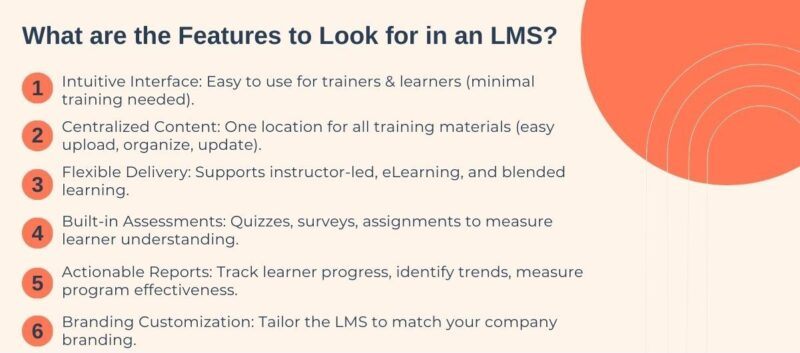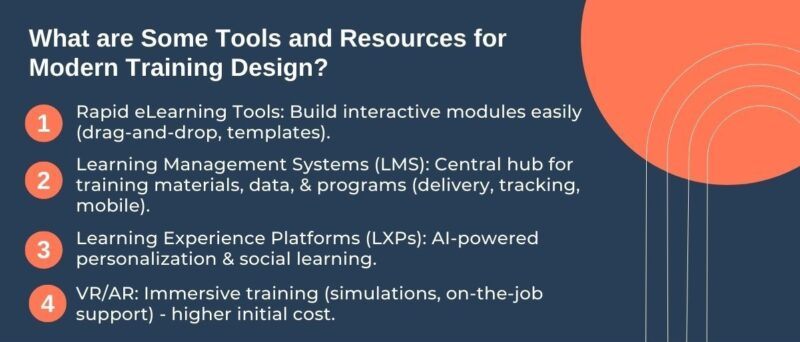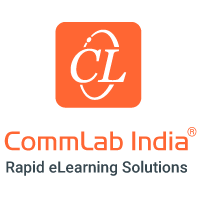
The L&D Manager’s Guide To Learning Architecture
Ever felt like your organization’s training programs are a scattered mess of good intentions? You’re not alone. Many L&D professionals struggle to create a cohesive learning architecture, a framework that guides how employees acquire the skills and knowledge they need to excel. But fear not, fellow L&D champions! This article will equip you with the steps to define a learning architecture that fosters a thriving learning culture.
What Exactly Is A Learning Strategy?
Think of your learning strategy as the roadmap for your organization’s learning journey. It outlines the training ROI you aim to achieve, the skills your employees need, and the methods to deliver them effectively. It’s the bridge between your business goals and a skilled, engaged workforce.
Defining Your High-Level Learning Strategy
Before diving headfirst into specific training programs, take a step back and ask yourself some key questions:
- What are the various levels of training required? Do you need basic onboarding for new hires, advanced skill development for veterans, or leadership training for managers?
- What are the different phases in which they are rolled out? Will onboarding happen during the first week, or will it be spread out over a month?
- How will you integrate different ways of training? The magic number for effective learning is often touted as the 70-20-10 model: 70% on-the-job learning, 20% through coaching and mentoring, and 10% through formal training (like custom eLearning). How will you leverage a blend of these methods?
Also, will you create or utilize existing communities of practice where employees can learn from each other? Will you equip managers to better support their teams’ learning goals? Can they provide coaching, and feedback directly related to the training content?
Diagnosing Your Current Learning Ecosystem
Before building a brand-new learning palace, let’s assess the foundation. Take a good look at your organization’s current learning ecosystem. Here are some core areas to consider:
- Strategy – Do you have a clear learning vision that aligns with the overall business goals?
- People – Do you have the necessary L&D staff and resources to implement your strategy?
- Learning culture – Does your organization encourage continuous learning and development?
- Learning content – Is your current content up to date, engaging, and delivered in the right format (online learning, in-person workshops, etc.)?
- Technology – Do you have the necessary Learning Management System (LMS) and other tools to deliver training effectively?
- Data – Are you tracking learning data to measure the impact of your training programs?

Identifying The Required Learning Solution
Based on your analysis, create a tentative list of required learning solutions. Consider the overall learning hours, learning modalities (eLearning, microlearning, blended learning), and necessary tools. Don’t forget to factor in budgets! For instance, if you choose a microlearning solution that also facilitates social learning, you need to consider how this will impact the learning flow. These decisions will guide the development of your learning strategy.

Building Your Dream Team: Assembling The Right People
Your learning architecture is only as strong as the team building it. Here’s how to assemble your dream L&D team:
- Internal resources – Take stock of the skills and experience of your existing Learning and Development staff. Can they handle the workload, or are there specific skill gaps?
- Upskilling and development – Consider investing in training and development opportunities for your current team members. They might possess foundational knowledge but need training in specific areas like Instructional Design, eLearning development, or data analysis.
- Staff augmentation – Sometimes, additional expertise is needed. Look for freelance L&D professionals or agencies to fill specific skill gaps or handle temporary project needs.
- Diverse perspectives – Building a diverse team with a variety of backgrounds and experiences is crucial. This ensures that your learning programs are inclusive and cater to different learning styles.
Is staff augmentation a necessity for corporate training?
Remember: Clear communication is key when working with internal and external resources. Define roles and responsibilities, set expectations, and establish a collaborative working environment.
Communication Is Key: Keeping Everyone On The Same Page
Successful learning architecture hinges on effective communication. Here’s how to ensure everyone is informed and engaged:
- Develop a communication plan – Create a clear plan outlining who needs to be informed about the learning architecture development process, how often, and through what channels (emails, meetings, internal communication platforms).
- Set expectations – Communicate timelines, milestones, and key decision points to stakeholders, including managers, executives, and employees.
- Gather feedback – Don’t operate in a silo. Actively solicit feedback from stakeholders throughout the process. This ensures your learning architecture aligns with their needs and expectations.
- Celebrate successes – Communicate the wins along the way! Highlight the impact of your learning architecture on employee development and business goals.
By establishing a clear communication cadence and fostering a collaborative environment, you can ensure that everyone in your organization is invested in the success of your learning architecture.
Wrapping Up
Defining your learning architecture takes time and effort, but the rewards are well worth it. With a strong foundation in place, you can create a learning environment that empowers your employees, boosts their skills, and ultimately drives business success.
